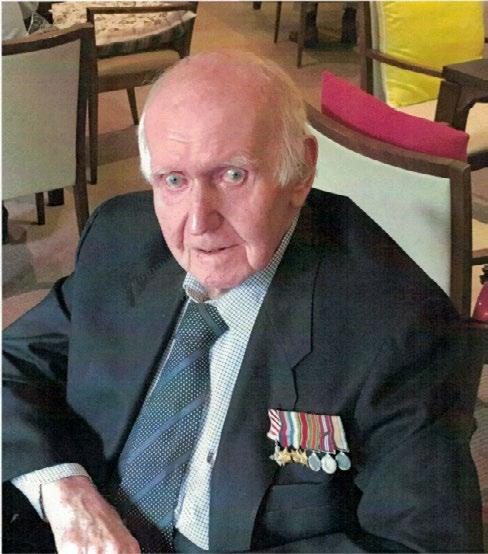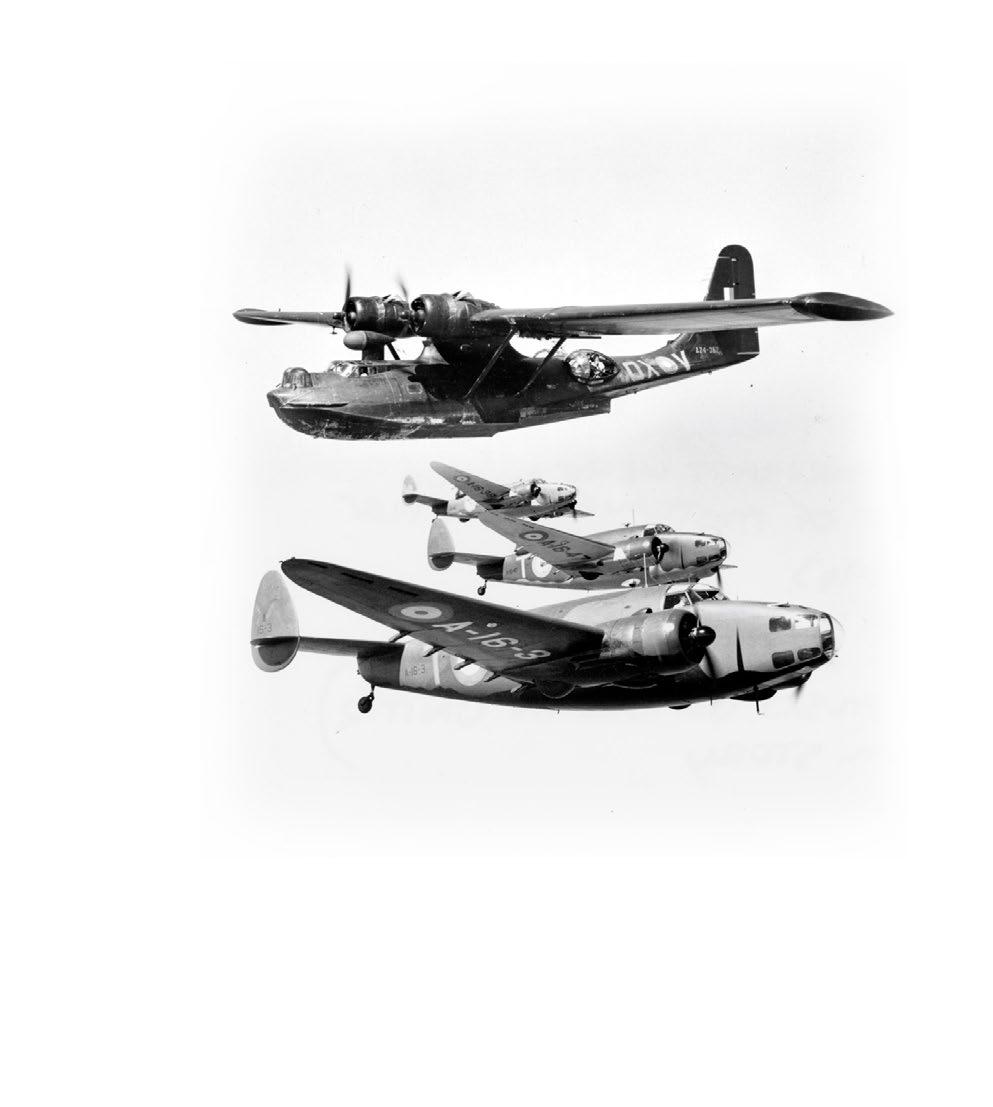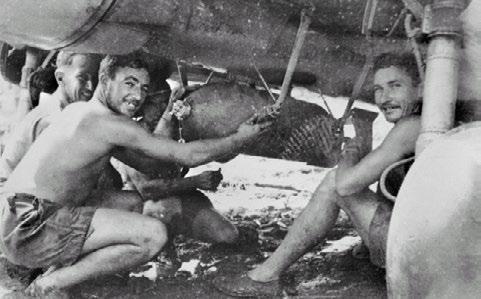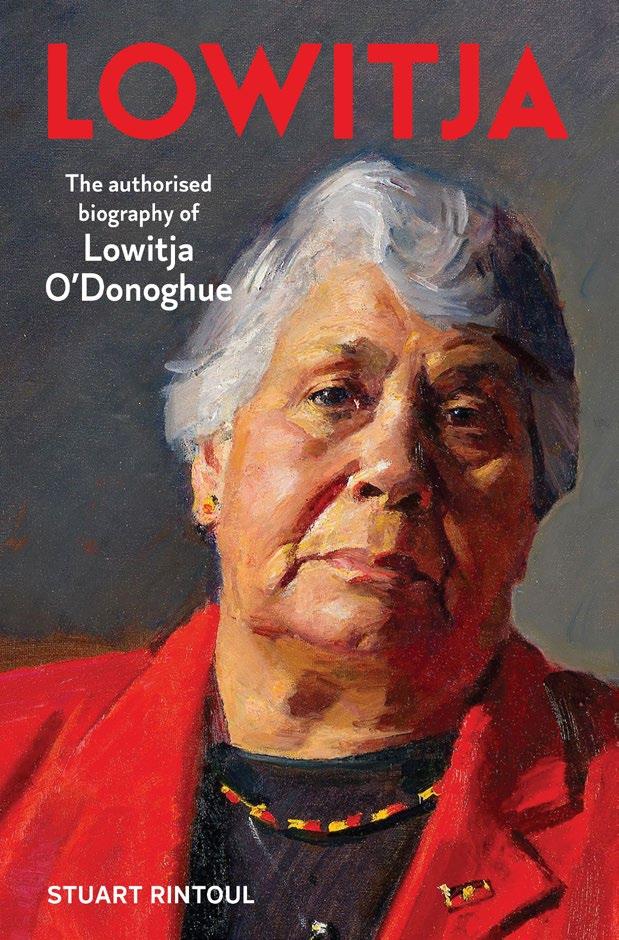
15 minute read
RAAF Centenary Call Out
CENTENARY
On March 31st, 2021, the Royal Australian Air Force (RAAF) will commemorate 100 years of service to the Nation. From modest beginnings in 1921, the Air Force has grown into a potent, world class Air Force which Australia relies upon in both conflict and peace. When Australia calls, the Air Force is ready to respond.
Advertisement
A series of national events and initiatives are planned for 2021 that will honour the sacrifices and service of the last 100 years, to demonstrate today’s highly capable force, and foreshadow the Air Force’s continued evolution into the future. One of those initiatives is to recognise and honour the service of Air Force Centenarians. That is people who have already turned 100 or will turn 100 during 2021. This will include RAAF Nursing Service, the Women’s Auxiliary Australian Air Force, and the Women’s Royal Australian Air Force, but will be dependent upon how activities may be affected by COVID restrictions. Follow our Centenary Commemorative activities on our website www.airforce.gov.au/100 to keep up to date.
CALL OUT
Two Air Force Centenarians who turned 100 during 2020 were Squadron Leader Jim Beckingsale, AFC and Flight Lieutenant Roger ‘Brian’ Winspear, AM.
SQUADRON LEADER JIM BECKINGSALE, AFC BY SQUADRON LEADER MICHAEL VEITCH
‘So, Beckingsale, how do you feel about flying-boats?’ ‘Wouldn’t know, Sir. Never even seen one’ ‘Excellent! You’ll be piloting one tomorrow’. With these somewhat alarming words, then Flight Lieutenant Jim Beckingsale was introduced to the famous Consolidated PBY Catalina, to fly maritime missions lasting up to thirty hours at a stretch during World War Two. Born in Castlemaine 100 years ago on 23rd May 1920, Jim remembers having to be driven to Melbourne by his father to join the RAAF in 1940, as he hadn’t yet obtained his driver’s license. For this quiet country lad however, it was the start of the greatest adventure of his life. Like many of his generation, Jim had been bitten by the flying bug as a kid, when the heroic figure of Sir Charles KingsfordSmith dropped down onto his local football field and – for a shilling a head – offered locals a twenty-minute joy ride over the town in his trusty Ford Trimotor (Smithy - legend of aviation though he was - was permanently cash-strapped). Thus, when war was declared, Jim’s choice of the RAAF was a simple one. “Everyone wanted to be a pilot”, he recalls, “but I was lucky – I was selected to be one before I was even asked”. Swept up in the organisational goliath of the Empire Air Training Scheme, Jim was one of the relatively few Australians sent to train in Rhodesia, then South Africa and finally to No. 1 (Coastal) Operational Training Unit at Silloth, in England’s North-west. Settling into his training on Lockheed Hudsons with Royal Air Force Coastal Command, Jim was surprised one morning to be brought before the Commanding Officer. “Ah, Beckingsale”, asked the senior officer, “how would you like to go home?” Jim had no idea what he was talking about. “But I’ve only just got here, Sir”, he pleaded innocently. Unbeknown to Jim, Japan’s recent entry into the war had prompted Australian Prime Minister John Curtin to recall as many Australian forces as Churchill would let him get away with, prompting one of the mightiest personality clashes of the war. In fact, Jim didn’t quite make it home, but in October 1942 arrived at Koggala on the southern tip of Ceylon (Sri Lanka) to join No 205 Squadron RAF, flying the Catalina flying-boat on convoy escort work and long-range anti-submarine patrols out over the vast turquoise-blue expanse of the Indian Ocean. Anti-sub patrols were gruelling affairs, involving hour upon hour of criss-crossing vast stretches of ocean in all weathers. It was mentally taxing, and often tedious work, which never allowed for one’s alertness to slacken even for a moment. As Don Brown, his trusted navigator - another Australian from Melbourne – once remarked down the intercom, “You know Beck, there’s a bloody lot of water in this war”. Sightings of the enemy were rare, but often fatal. On one occasion, one of 205’s Cats was jumped by five Japanese Ki27 ‘Nate’ fighters, setting the flying-boat ablaze, which then exploded just above the sea with the loss of all seven crew. Living conditions at Koggala were primitive, and the food was meagre “Mainly William Angliss Bully beef and rhubarb”, recalls Jim. “There weren’t much heroics in the job”. His medal row however, belies this with the inclusion (along with the rare combination of both the Atlantic and Burma Stars) of the distinctive silver shield and red and white stripe of the Air Force Cross, awarded for bravery in the air, but not necessarily in combat. While remaining tight-lipped as to the official reason for the honour, Jim recounts a surprise visit to the station by no lesser figure than Lord Louis Mountbatten. “He turned up one afternoon, accompanied by three or four beautiful ladies, uttered some brave things, then drove off in a jeep, throwing a few gongs out the back. I happened to be standing behind the jeep”. Though perhaps not as glamorous as flying the Spitfire or Hurricane, airmen like Squadron Leader Jim Beckingsale contributed to the war effort nonetheless, risking their lives doing the jobs that needed to be done in the dark days of World War Two, bringing to the task that characteristic Australian sense of duty, modesty, and humour.

FLIGHT LIEUTENANT ROGER “BRIAN” WINSPEAR, AM BY FLIGHT LIEUTENANT LAIN THORN
Not even COVID-19 could dampen the enthusiasm of former Roger “Brian” Winspear when he celebrated his 100th birthday on 26 September 2020, with a small gathering of friends in Hobart. With war declared in Europe in 1939, Tasmanian born, Flight Lieutenant Winspear signed up to become aircrew with the Royal Australian Air Force. He became a Wireless Operator/Air Gunner in 1940 and his first posting to No.2 Squadron at Laverton Victoria flying in Douglas DC2 and Lockheed Hudson light Bombers. The squadron relocated to Darwin and then Kupang in West Timor where they provided air cover for 1500 Tasmanians of the ill-fated 2/40th Battalion, and conducted many reconnaissance missions over Indonesia. During a bombing raid in Darwin, Flight Lieutenant Winspear said, “I looked up at them, the sun glinted on the side of the bombs and there were thousands of them, they were directly overhead. “I stuck a cork in my mouth to help with concussion from the bomb blasts and I got down, right in the bottom of the trench and was lucky to only sustain bomb splinter injuries to my hands and eye.” Flight Lieutenant Winspear continued to provide service through to November 1945, with 600 hours flying in his log book, he discharged with 700 pounds (deferred pay) and a ticket home. Never one to rest, on his return to Tasmania he moved to Bicheno where he become a well-known business owner, tourism developer and community figure. In 1993 he was awarded an Order of Australia for services to the tourist industry and the community. He also fought for his squadron’s recognition for their outstanding performance in the Darwin and Indonesian theatres in 1942-43 for which the Squadron was awarded a United States President’s citation. The RAAF’s 100th birthday is not too far way and Brian Winspear has every intention of celebrating. “I’m in good health and I intend donning my original uniform for the Air Force’s 100th birthday celebrations in March 2021”.
ABOVE LEFT: Jim Beckingsale - Jim’s impressive medal tally includes the unusual combination of both Burma and Atlantic Stars, as well as the even rarer Air Force Cross, and over the War Medal, the leaf denoting Mentioned in Despatches. ABOVE RIGHT: Brian Winspear - Brian with his 100th birthday greetings card from Her Majesty Queen Elizabeth II.
The Royal Australian Air Force and the South West Pacific Air Campaign 1941-45
When war broke out in Europe in 1939, few in Australia could have predicted that, by December 1941, the nation would also be fighting a war against Japan.

Even those who were concerned about Japan’s growing military power and expansionist policies would not have thought that, by February 1942, Darwin would be bombed and that Japan would occupy a region encompassing parts of Burma, China and across the south west pacific. For Australia, the immerging threat to national security meant a major rethinking of the entire war effort was required. The experience of the Royal Australian Air Force (RAAF) in shifting to meet the new threat is a story of a small training focused force’s remarkable transformation into the fourth largest air force in the world. When war came to the Pacific in 1941, the RAAF was in a poor state to conduct operations in what became known as the South West Pacific Area (SWPA). The main focus of the RAAF’s efforts had been directed towards training aircrew for service with the Royal Air Force (RAF), to conduct operations in the European and Mediterranean theatres. Under an agreement known as the Empire Air Training Scheme (EATS), the RAAF was committed to providing 194 aircrew a month, rising to 784 a month from December 1939 to March 1943. The RAAF was investing heavily in aircraft and facilities focused almost entirely on training. So when Japan entered the war in December 1941, the RAAF did not have a single modern fighter aircraft in Australia, no modern bombers and no means to deploy and sustain personnel into the remote regions to Australia’s north. The first hint of an emerging RAAF able to meet the Japanese threat was the formation of No. 75 Squadron in Townsville on 4 March 1942. The unit was equipped with modern P-40 Kittyhawk fighters and led by experienced squadron and flight commanders brought back from postings with the RAF in North Africa. No. 75 Squadron went into action over Port Moresby on 21 March just hours after flying in to the beleaguered town. On that day a Japanese reconnaissance aircraft was successfully ambushed and shot down. On the following day the squadron attacked a Japanese airbase at Lae, destroying 11 enemy fighters on the ground and in the subsequent dogfighting. For the next six weeks the aircrew fought a lone air campaign against the Japanese bombers and fighters which were attacking Port Moresby in preparation of a ground invasion. In the following years of the war, the RAAF underwent a massive expansion program. This resulted in not only sustaining the training program demanded of the EATS commitment, but in developing a radar network around Australia and into the SWPA. RAAF Catalina aircraft had been the first Allied aircraft to go into action in the Battle of the Coral Sea, while the fighter and bomber aircraft had been the decisive factor in the victory at the Battle of Milne Bay in August 1942. The RAAF was not only being equipped with modern aircraft, but was fast becoming capable of deploying and sustaining air operations in the remote areas of the SWPA, Airfield construction squadrons were formed, as were airfield defence forces alongside logistical, engineering and medical units. All were able to deploy to the SWPA sustained by a fleet of some 2000 RAAF marine craft. Fighting alongside American forces and the Australian Navy and Army, the RAAF was part of the great fightback through the region, being part of the forces in the retaking of New Guinea, the Solomon Islands and Borneo. The RAAF could even offer critical capability to the massive US forces deployed to the SWPA, with a highly secret RAAF signals intelligence unit and an airfield construction squadron –the only Australian ground units to be included in the American forces which liberated the Philippines in 1944-45.
ABOVE: The RAAF Catalina aircraft proved to be a versatile long range strike and maritime patrol aircraft ideally suited to operations across the SWPA.
BELOW: RAAF Hudson aircraft circa 1941. These aircraft and crews were the first Allied units to go into action against the Japanese in World War II, some hours before the Pearl Harbor air raids.
RAAF Airfield Milne Bay circa 1944 (RAAF Museum)
RAAF armorers prepare a Kittyhawk fighter for another attack during the crucial Battle of Milne Bay, August 1942.


GETTING YOUR HERITAGE READY FOR THE FIRE SEASON

This Fire Season Preparation Guide is not a replacement for a bushfire plan, but should supplement it. A bush fire plan (including air quality plan) should be prepared by following guides from your local government or organisations like the Red Cross.
Personal safety is always about making risk assessment and practicing the implementation of strategies to negate the worse case scenarios. Unfortunately in Australia, we know that fire can move fast, and shift suddenly with wind. Access roads can be hazardous and exits impeded. Having a plan and activating it swiftly and confidently is essential. This guide is to tweak your memory on things that often get over looked in the heat of the moment. What can you do now? In an evacuation scenario there are many things which need to be left behind. Some family items, such as grandfather clocks, Persian carpets, large art works, pieces of furniture are likely to be too heavy to move or have no hope to fit in the car. Before the fire season begins consider;
• Take photos of these items and document their story (It may be possible for a copy of the item to be made if it is lost, so make sure these are good images that catch all the details necessary), • If they are valuable, you may want a conservator to visit the house and do an independent condition report and take images, • Consider an alternative family custodian away from fire risk regions to care for these items during the season, • Make sure the family all agrees that the risk is acceptable. (Many family feuds have begun when an irreplaceable item is lost and other family members feel that is could/should have been out of harms way), • Ensure these items are known to your insurer, • Make sure things you do plant to take are accessible. Roof spaces and the back of sheds are not safe places and it can be impossible to get a ladder and retrieve items stored there when you have limited evacuation time, • Return borrowed items prior to the fire season. This will save you worrying about getting them out, • Make sure you have digital files backed up and in a form that is portable, • Swap duplicates and photo negatives with a friend so you have your photos and their negatives just in case, • Make sure you know what each person in the family would want to take. Have a shelf where these things are kept, teddy, favourite books, jewellery, trophies etc., • Have a shelf in a communal area for the family photos, family bible, spare hard drive so these things are all in one place and easy to grab, • Consider how you store things. Having precious items in a chest or camphor box, which is too heavy to lift and wont fit in the car is not helpful, • Make sure you have empty plastic tubs in the shed or under the house so you have something, which will fit in the car, to put things in. (There is no time to head to the shops during a fire), • If you are away on holiday, make sure the person feeding the cat or checking on the house knows which items matter if they may have time to rescue things on your behalf, • Put a file together in the filing cabinet with insurance paper work, deeds, ID, prescriptions and the other items that are necessary. Put some cash in the file too because if power is down so are automatic teller machines. You may need cash for fuel etc as you are leaving, • Make sure items are not tucked away where you won’t find them in a hurry, and • Have flat discs of card for sandwiching rare record albums so they aren’t heat effected. Remember the fire season doesn’t care about Covid. So a box of Covid supplies is also a good idea. This should include sanitizer, face masks, gloves, and water bottles so you can gather with people in evacuation centers if necessary. Think about your furry friends as well, have pet food and spare collar lead and water in the dog/cat carrier. The following is a memory jogging list of things we know often are forgotten in an evacuation:



• Photo albums, stamp albums, slides and film reels, • Hard drives, laptops Jewelry boxes/ Medal sets (medals can be re issued on occasion), • Special tools from past family professions or from the shed, • Sheet music and instruments, rare records, • Recipe books, (hand-written family ones especially) and rare books • Board games and chess sets, and • Favorite childhood toys, books, Christmas decorations. favorite vases or ornaments.
VICTORIA PEARCE
Last Post readers can write in with concerns or queries about the artefacts they have in their family collection. Letters will be answered by a qualified conservator from Endangered Heritage Pty Ltd. Endangered Heritage is a conservation business in Canberra, endorsed by the National RSL for conserving our military history. Both Victoria and Andrew Pearce have years of experience at the Australian War Memorial and with other military collections. Write in to LastPost@endangeredheritage.com to get a response in the following issue.










